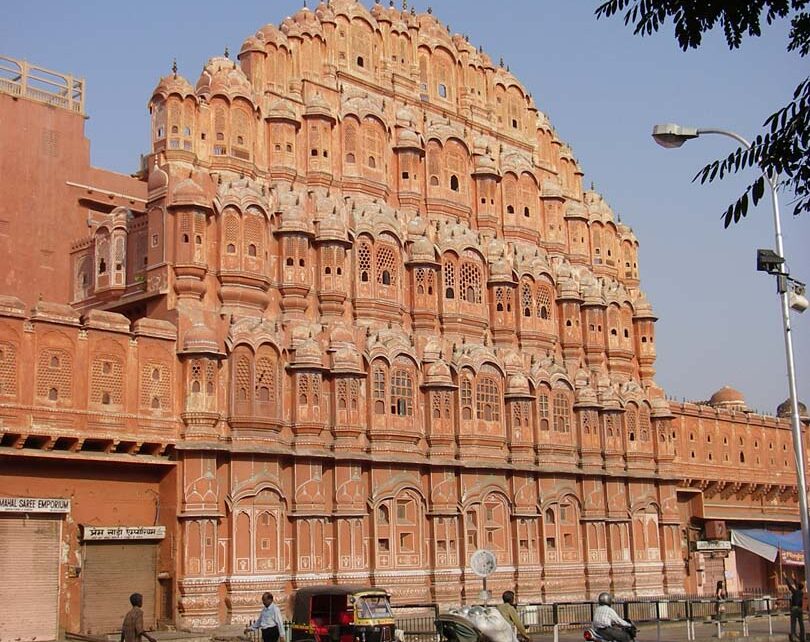
Hawa Mahal was built in 1799 by Maharaja Sawai Pratap Singh and designed by Lal Chand Ustad.
In hawa mahal jaipur larger opening in west side and small opening in east side , this strategy receive north west side wind into the building , we always feel the breeze
The design of Hawa Mahal in Jaipur is based on the principle of cross-ventilation, which is a fundamental concept in fluid mechanics. Cross-ventilation relies on the pressure differences created by the movement of air molecules. When air molecules are heated, they expand and become less dense, causing them to rise. This creates an area of low pressure at the top of a building, which draws in cooler air from outside. This process is known as convection.
The design of Hawa Mahal takes advantage of this natural process by creating a series of openings on the western side of the building, which allow cooler air to flow in from outside. The smaller openings on the eastern side of the building help to regulate the flow of air and maintain a comfortable temperature inside the building.
Hawa Mahal was designed with a series of windows and openings on the western side of the building, which allow air to flow into the palace. As the air flows through these openings, its speed increases due to the narrow openings, and according to Bernoulli’s principle, its pressure decreases. This creates a low-pressure zone inside the building, which draws in cooler air from outside, helping to ventilate and cool the interior.

In Hawa mahal complex courtyards at various levels have a single storey construction on west and double storey on east side. The other two sides have tall walls forming the shape of a valley. These features help trap the westerly wind, and deflect it downwards. This process augments flow of wind through the openings on eastern side of the courtyard.
The Hawa Mahal has 953 small Jharokhas (covered windows) which allow view towards the outside and enhance ventilation inside the building through their position and shape (jails are set at an angle maximizing wind flow according to Bernoulli-Venturi principle

The maximum small openings are given at the East facing side (176 small windows), where the galleries are located, to capture the prevailing wind all year round, but especially in summer when the prevalent wind pattern is East to South East. All the main rooms are oriented towards the North side with small openings but attached to verandas and courtyards through archways and porticoes.

Section of the Hawa Mahal showing wind patterns for East prevailing

Section of the Hawa Mahal showing wind patterns for West prevailing
Reference: Analysis Of Natural Ventilation Systems In Heritage Buildings: A Case Study Of Hawa Mahal, Jaipur India by Ioana Gabriela Simion , Prof (Dr) Madhura A Yadav
Disclaimer
Information on this site is purely for education purpose. The materials used and displayed on the Sites, including text, photographs, graphics, illustrations and artwork, video, music and sound, and names, logos, IS Codes, are copyrighted items of respective owner. Front Desk is not responsible and liable for information shared above.
Love these types of pieces which cover not so well known building details, such as cross ventilation.
Cheers, Brian